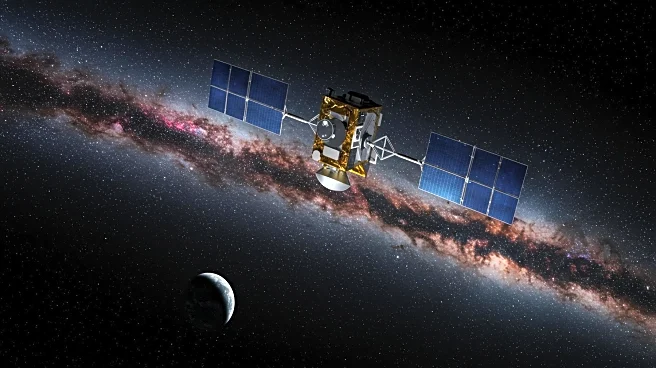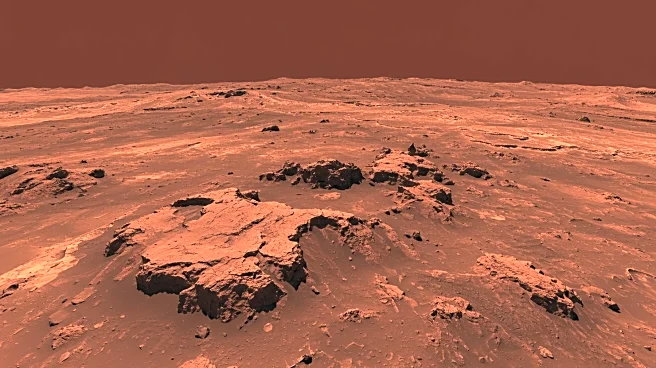What is the story about?
What's Happening?
A recent review examines the formation and evolution of haze layers in the atmospheres of Titan and Uranus, focusing on the chemical processes driven by low-energy photons and electrons. Titan, known for its dense atmosphere, hosts complex organic molecules formed under low-temperature conditions. These processes are initiated by photons and electrons with energies less than 50 eV, leading to the creation of organic species and aerosols. Uranus, the smallest ice giant, presents unanswered questions about its atmospheric composition and structure, making it a target for future exploration. The review aims to evaluate the relevance of Titan's atmospheric processes on Uranus, anticipating future observational and in situ exploration.
Why It's Important?
Understanding haze formation on Titan and Uranus is vital for comprehending the chemical dynamics and radiative balance of planetary atmospheres. These insights can inform future missions to explore these celestial bodies, potentially revealing new information about their atmospheres and organic chemistry. The study of haze formation contributes to astrobiology by enhancing knowledge of organic molecule production in extreme environments, which could have implications for the search for life beyond Earth. This research also aids in refining models of atmospheric processes, impacting planetary science and exploration strategies.
What's Next?
Future missions to Uranus and Titan may focus on in situ exploration to gather data on atmospheric composition and haze formation. Observational studies using advanced telescopes could provide insights into the seasonal variability and chemical processes occurring in these atmospheres. Collaborative efforts between space agencies and research institutions may lead to the development of new technologies for studying planetary atmospheres. The scientific community is likely to continue exploring the implications of haze formation for understanding planetary environments and potential habitability.
Beyond the Headlines
The study of haze formation on Titan and Uranus highlights the complexity of planetary atmospheres and the role of photochemical processes in shaping their characteristics. This research underscores the importance of interdisciplinary approaches, combining insights from chemistry, physics, and planetary science. Ethical considerations may arise regarding the prioritization of exploration missions, balancing scientific curiosity with resource allocation. The findings could influence cultural perceptions of space exploration, emphasizing the interconnectedness of celestial bodies and the potential for discovering life-supporting environments.
AI Generated Content
Do you find this article useful?











